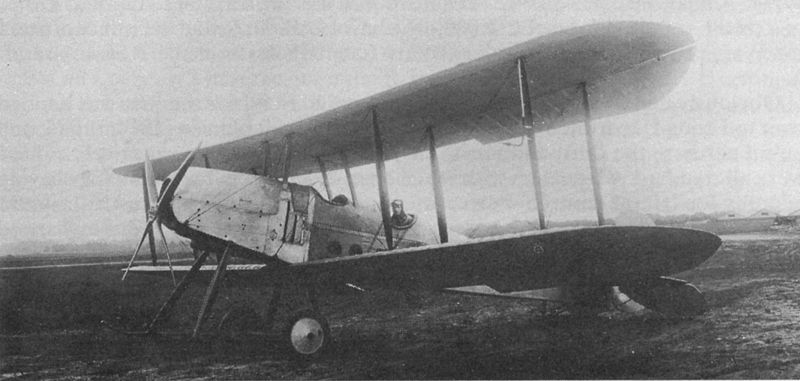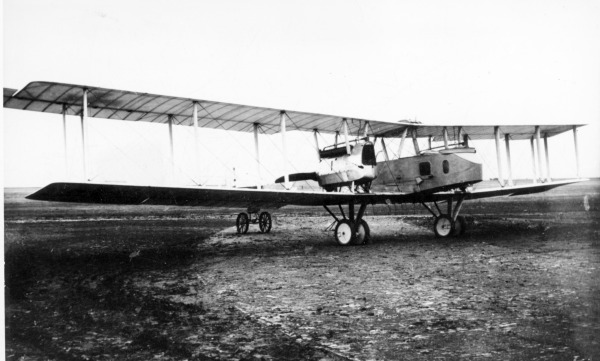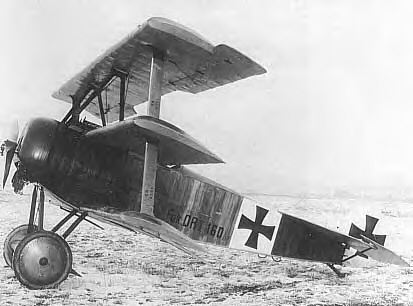Aviation during the First World War - irrelevant or critical factor?
Military
15 December 2020
The First World War (1914-1918) was the first major military conflict in which aviation and airpower was widely used. Although flight was still in its infancy towards the beginning of the war, the technology greatly progressed as the war continued, driven by a need for quick innovation. Even a small technological upper hand could make a huge difference.
On June 28, 1914, Archduke Franz Ferdinand was assassinated, leading to a rapidly escalating series of conflicts in Europe. Alliances resulted in the Allied and Central Powers. Civilian morale was high and a deadly worldwide conflict ensued over the next several years.
Reconnaissance was the primary role of aviation during the war, and especially during its early stages. Aircraft and engines weren't strong at all and could at most carry their own weight and maybe one or two people. As such, they were used mainly to fly above the battlefield and provide information to people on the ground, who could make informed strategic decisions. Lighter-than-air balloons were also used for reconnaissance, but they were quickly phased out by their fixed-wing counterparts. Balloons were large targets that could easily be shot down.

The Royal Aircraft Factory R.E.5 was a fixed-wing biplane two-seat reconnaissance aircraft used by Britain during the First World War. In 1914, it set an altitude record by flying to almost 19,000 feet. Public Domain.
Most early airplanes were in pusher configuration - that is, the engines and propellers were behind or next to the pilots. The advantages of this configuration were that they allowed pilots good visibility, which was paramount since the aircraft were being used for reconnaissance. However, the tractor configuration (engine and propeller in front) gained in popularity. Although the visibility was now obstructed, the tractor configuration allowed for heavier and better engines to be placed on aircraft, causing a large increase in performance. This became the standard and preferred design.
Better performance and more powerful engines led to new, unique uses of aviation during the war. As aircraft could carry increased loads, the first cases of aerial bombings came to be. Initially, it only consisted of pilots throwing hand grenades or small bombs out of their aircraft. However, larger and larger bombs could be loaded into aircraft and dropped, allowing for strategic bombing. Bombings were hindered by a lack of accurate aiming echnology and poor navigational equipment. The Germans also used Zeppelins to bomb the British, but they were large, easy, highly flammable targets whose effects mostly included civilian terrorization.

The Gotha G.V was a twin-engine pusher configuration bomber used by Germany during the First World War for long-range night bombing operations. It featured a dedicated bomb compartment and a tunnel a gunman could use to operate weaponry aimed below the aircraft. Public domain.
Increased load carrying capacity also led to fighter aircraft and the first cases of direct aerial warfare. Initially, pilots from opposing armies avoided fighting each other directly. However, pilots soon began to carry pistols and shotguns with them, with the intent of shooting at other aircraft. The guns were slow and inaccurate, and rarely did the shots hit where intended.
Machine guns were the solution. They were already being used widely on the ground, so why not add them onto airplanes? The task wasn't so simple. Adding a machine gun onto a pusher aircraft would be difficult as the engines weren't powerful enough to carry such a load. Adding machine guns onto tractor aircraft resulted in the bullets hitting the propeller and shooting it off. The French solved that problem by adding metal shields onto the backs of the propellor blades to deflect the shots that hit it. Unfortunately, this did not work for the Germans whose steel bullets shattered the guards, unlike the copper bullets used by the French.
Problems require solutions, and need drives innovation. The Germans invented a new piece of technology called the interrupter. Aptly named, it prevents machine guns from firing when the propeller blocks it. This allowed for increasingly powerful fighter jets. Fighter aircraft also led to formation flying, in which aircraft could guard each other by flying near each other. Fighter aircraft also led to a series of aces, who attempted to shoot down as many enemy aircraft as possible. One of the most famous aces of the First World War was Manfred Albrecht Freiherr von Richthofen, better known as the Red Baron. He was able to shoot down 80 enemy aircraft during the war, and died in battle in 1918. Canada's Billy Bishop who shot down 72 enemy aircraft now has an airport in Toronto named after him.
So just how important was aviation during the war? Historians often have mixed opinions. Some take the stance that because aviation and airpower were still in early development, they didn't play an important role in the war. Others believe that airpower was decisive.
It's certainly true that aviation was still in its infancy at the time of the war, but the war made it so that countries needed to rapidly improve and develop their technologies so that it could be used more effectively. During the war, people were well aware of the advantages that aviation gave to those who had it, and they dealt with it accordingly.
At the Battle of Verdun, the Germans were aware of French reconnaissance aircraft and attempted to trick them as they were preparing for the battle. They also tried to block them from the air. German reconnaissance aircraft allowed them some advance knowledge of what would happen at the Battle of the Somme, which may have been a factor in the deadly stalemate that ensued. At the end of the war, the Treaty of Versailles banned Germany from having any military aviation at all. If aviation wasn't important to the First World War, then why did the Allies try to permanently destroy Germany's military aviation?

The Fokker Dr.I was a triplane flown famously by the Red Baron. Although not shown, his aircraft was painted a bright shade of red. Public domain.
As the first major military conflict in which airpower was widely used, the First World War was an impetus that led to a boom in aviation technology development. It led to stronger engines, better airframes, and new technologies altogether. As the war came to an end, people began to realize just how effective aviation was in military applications, and that it would completely change the way future wars were fought.
References
- Amerman, Annette D. "Devil Dogs with Army Wings: Marines with the AEF Air Service in the First World War." Army History, no. 103 (2017): 28-42. http://www.jstor.org/stable/26300686.
- Balboni, Mark, John A. Bonin, Robert Mundell, Doug Orsi, Craig Bondra, Antwan Dunmyer, Lafran "Fran" Marks, and Daniel Miller. MISSION COMMAND OF MULTI-DOMAIN OPERATIONS. Report. Strategic Studies Institute, US Army War College, 2020. 3-16. doi:10.2307/resrep26552.7.
- Biddle, Tami Davis, and J. Boone Bartholomees. VOLUME I: THEORY OF WAR AND STRATEGY. Report. Strategic Studies Institute, US Army War College, 2012. 273-94. http://www.jstor.org/stable/resrep12116.23.
- "Big German Battleplane Designed Splendidly". Popular Mechanics, October 1917.
- BRIGHT, CHARLES D. "AIR POWER IN WORLD WAR I SIDESHOW OR DECISIVE FACTOR?" Aerospace Historian 18, no. 2 (1971): 58-62. http://www.jstor.org/stable/44524708.
- Bruce, J.M. (1957). British Aeroplanes 1914-18. London: Putnam.
- Garrett, Stephen. "Bombing to Win: Air Power and Coercion in War." American Political Science Review 91, no. 2 (1997): 506+. https://link.gale.com/apps/doc/A19618801/UHIC?u=monm93287&sid=UHIC&xid=35a3feab.
- Gentile, Gian P. STAND UP AND FIGHT!: THE CREATION OF U.S. SECURITY ORGANIZATIONS, 1942-2005. Report. Edited by Seidule Ty and Whitt Jacqueline. Strategic Studies Institute, US Army War College, 2015. 205-16. Accessed December 15, 2020. http://www.jstor.org/stable/resrep11760.16.
- Guilmartin, John F. "Military aircraft: World War I". Encyplopedia Britannica. https://www.britannica.com/technology/military-aircraft/World-War-I
- Guttman, John. "Verdun: The First Air Battle for the Fighter". Relevance: Quarterly Journal of The Great War Society 18, no. 3 (2009): 5-12.
- Hennessy, Juliette A. "MEN AND PLANES OF WORLD WAR I AND A HISTORY OF THE LAFAYETTE ESCADRILLE." Air Power History 61, no. 2 (2014): 14-27. http://www.jstor.org/stable/26276450.
- Holmes, Frederick. "The Death of the Red Baron". University of Kansas School of Medicine. https://www.kumc.edu/wwi/biography/red-baron.html
- Royde-Smith, John Graham and Dennis E. Showalter. "World War I". Encyplopedia Britannica. https://www.britannica.com/event/World-War-I
- "World War I". Encyplopedia Americana, 1976, V. 29 p. 232.
- Ziegler, Charles A. "Weapons Development in Context: The Case of the World War I Balloon Bomber." Technology and Culture 35, no. 4 (1994): 750-67. doi:10.2307/3106505.